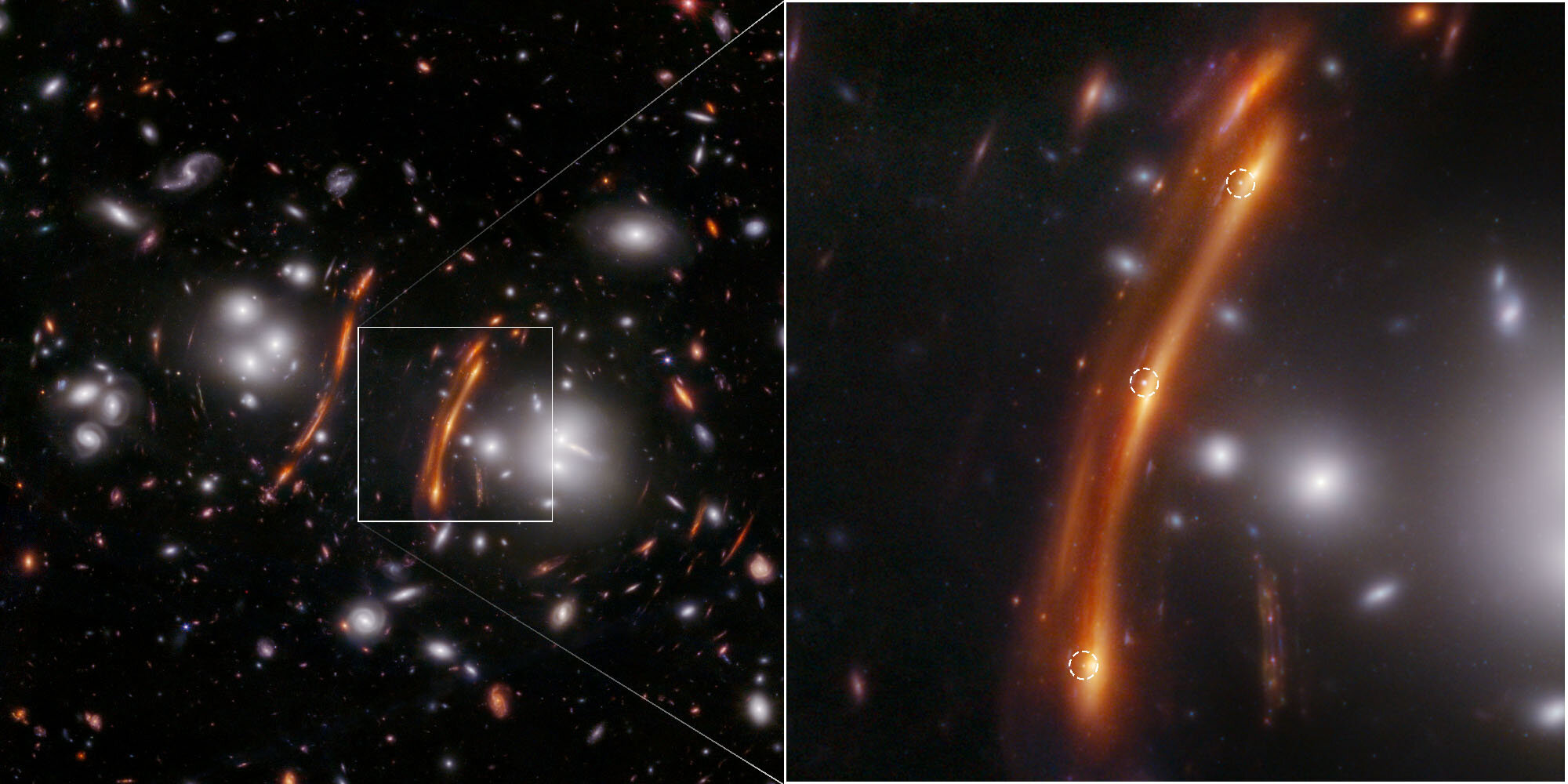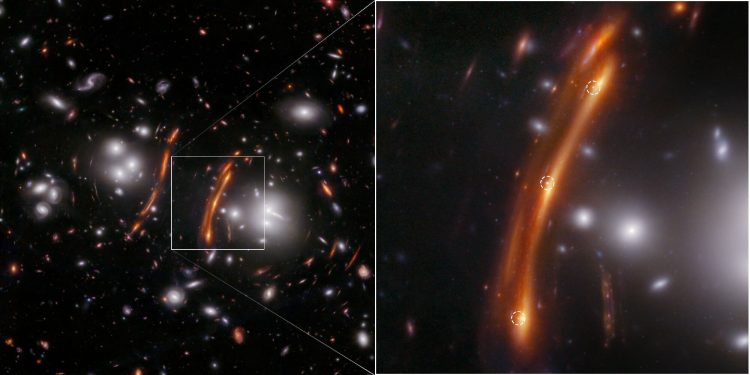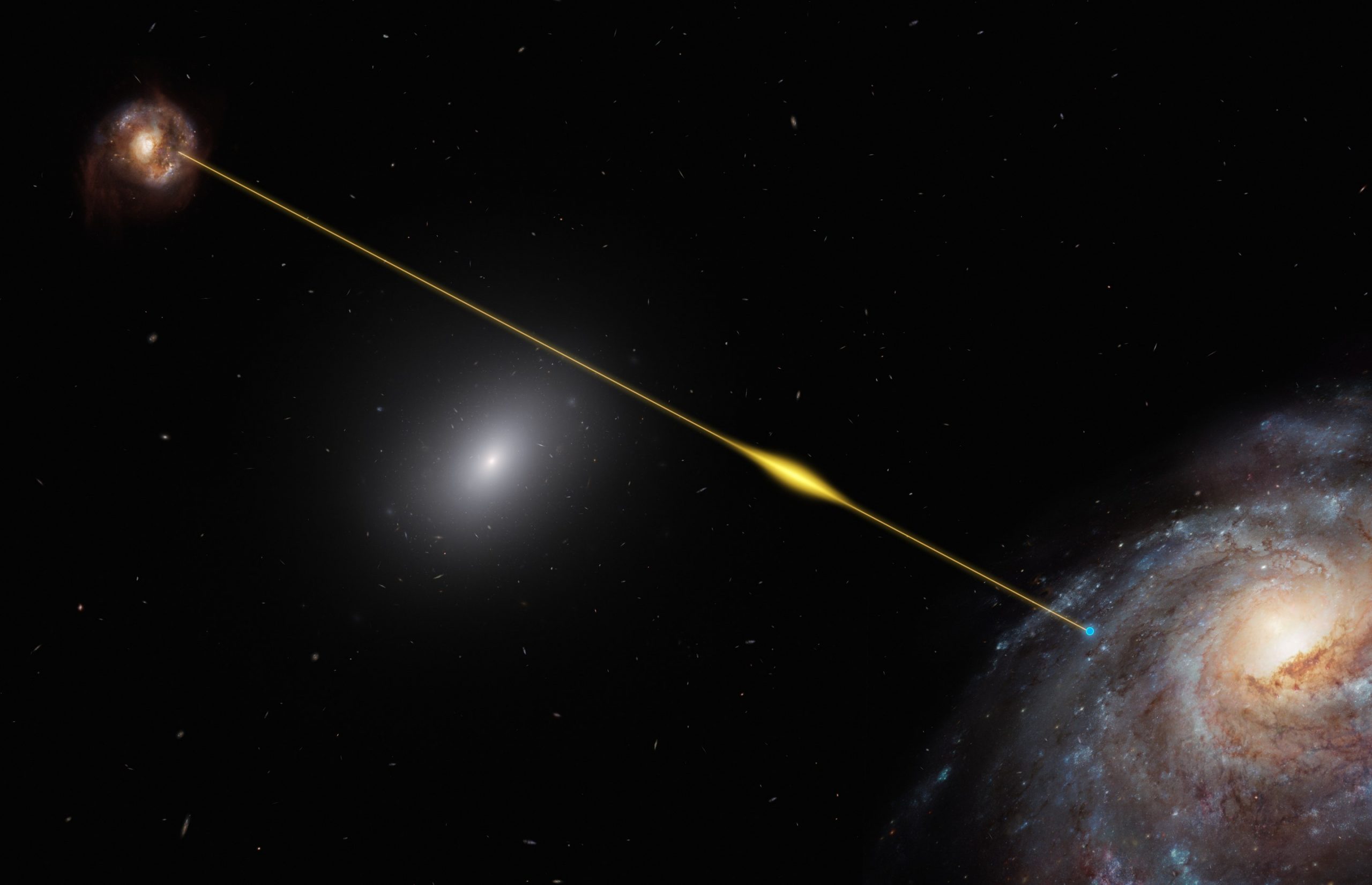The rate at which our universe is expanding, known as the Hubble constant, has been a point of contention among astronomers for years. Scientists worldwide have been working tirelessly to refine this number, often using data from various ground- and space-based observatories. Now, the James Webb Space Telescope has added a new piece to this complex puzzle.
Earlier this year, data from the Webb telescope helped confirm previous measurements from the Hubble Space Telescope, specifically using Cepheid variables and Type Ia supernovae as distance markers. These markers have been crucial in gauging the universe’s expansion, but a new method is offering even more precision—thanks to a phenomenon called gravitational lensing.
Gravitationally Lensed Supernovae
A team led by Brenda Frye at the University of Arizona is pushing the boundaries of how we measure the universe’s expansion. After Webb’s observations revealed three points of light in a distant galaxy cluster, researchers quickly realized they were onto something extraordinary. The phenomenon they observed was a supernova, now affectionately named SN H0pe. But what makes this supernova special isn’t just its rarity—it’s also the way its light was bent by the gravitational forces of a galaxy cluster lying between Earth and the supernova.

Gravitational lensing, as this bending effect is called, creates multiple images of the same supernova, similar to how a trifold mirror produces three reflections of a person. With this discovery, the team realized that they could use this effect to measure the Hubble constant in a novel way.
Why Three Images Matter
The three different images of SN H0pe were captured at three distinct times, as the light from the supernova followed different paths around the galaxy cluster. Since these paths vary in length, and light always travels at the same speed, each image represents a different phase of the supernova’s explosion.
This “time delay” provides valuable data about the supernova’s distance and the properties of the galaxy cluster, which in turn leads to an estimate of the Hubble constant. The team, after analyzing the lensing effect and confirming the supernova’s Type Ia classification, has reported a Hubble constant value of 75.4 kilometers per second per megaparsec, with a margin of error. While this result aligns with other measurements in the local universe, it does stand in some tension with data gathered from the early universe.
Webb and Beyond
The discovery of SN H0pe is groundbreaking not just for the James Webb Space Telescope, but for our broader understanding of the universe. This is only the second time the Hubble constant has been measured using gravitationally lensed supernovae, and the first time with a standard candle. As Webb continues to observe, researchers are optimistic that future data will help resolve the discrepancies between local and early-universe measurements.
Webb’s next round of observations is expected to refine these estimates further, offering even more precise constraints on the Hubble constant and, by extension, the nature of the universe’s expansion. For now, astronomers like Frye and her team are hopeful that SN H0pe will continue to light the way toward a better understanding of our cosmic home.











